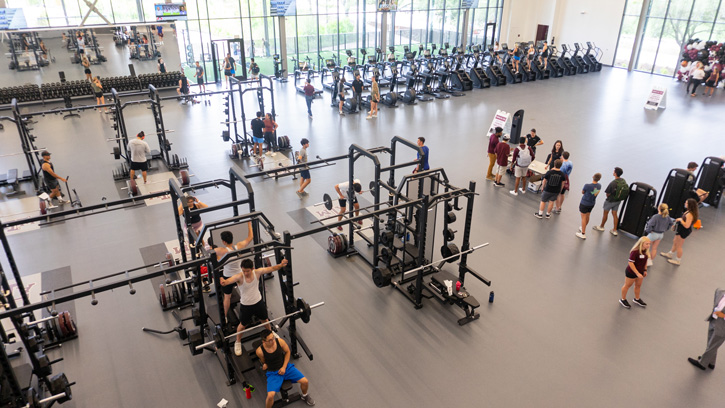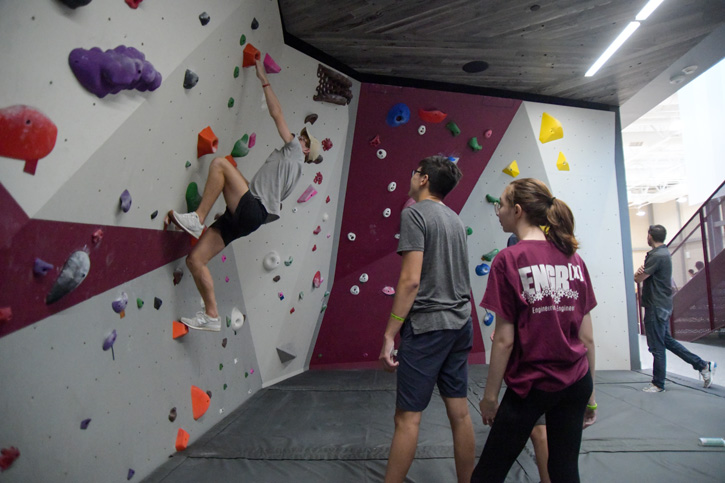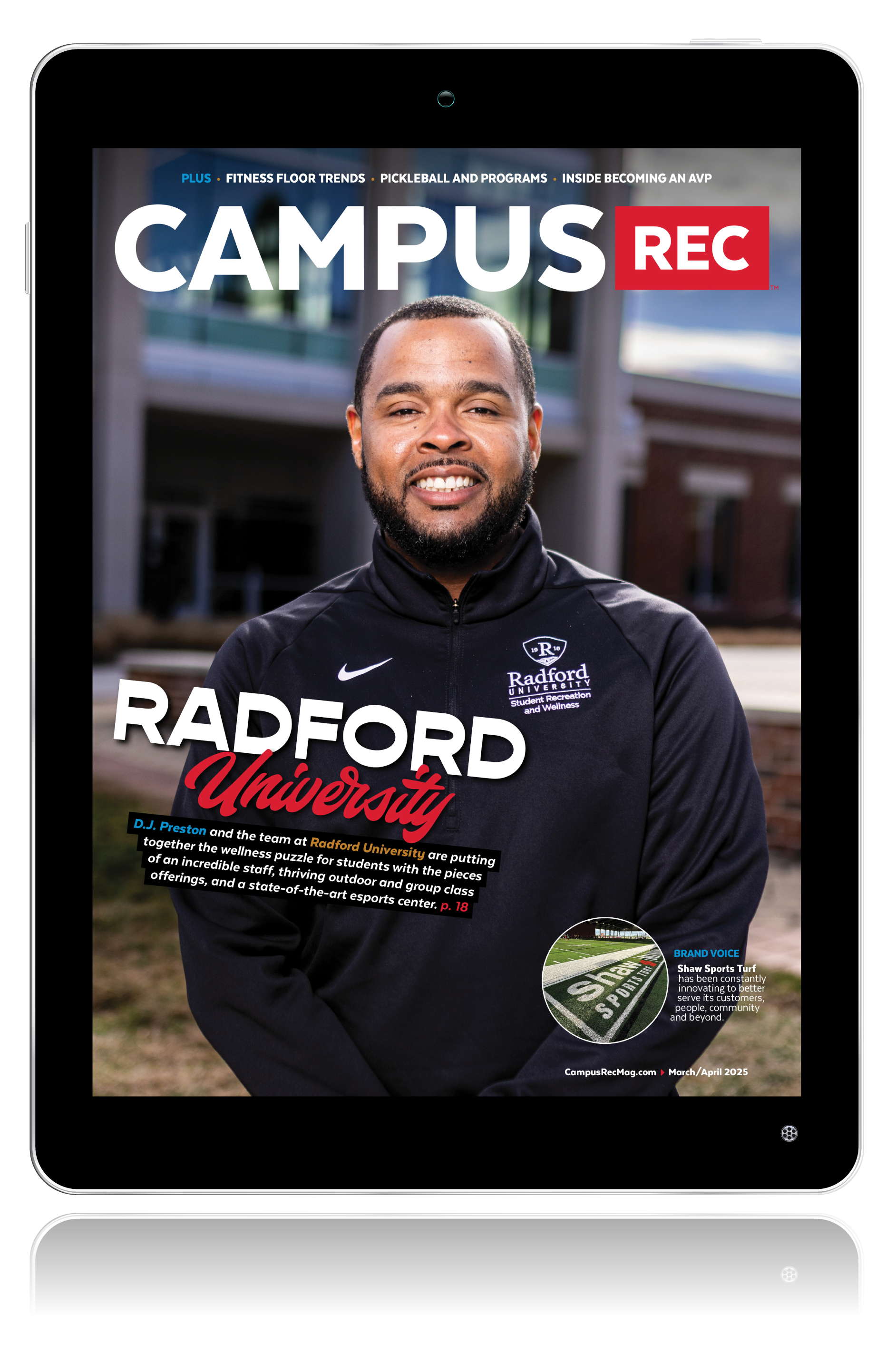On August 24, 2022, Texas A&M University Rec Sports opened its new $30 million Southside Rec Center to students. At over 78,000 square feet of recreational space, the facility will provide the campus with its third state-of-the-art fitness complex.
Rick Hall, the director of Rec Sports, said the new addition to Texas A&M is necessary due to the university’s continued student population boom. Despite formerly expanding the original Rec Center and constructing the Polo Road Rec Center, he said there was still a large need for more space.
“All of this has happened as a result of incredible growth on campus of student population,” said Hall. “I’m not sure what the official enrollment is, but it’s now over 70,000. We knew we were bursting at the seams. We did strategic planning and initially came up with a plan of two satellite facilities. The first helped to relieve some of that crowding.”
Before the Southside Rec Center’s opening, students on that end of campus had to walk over 20 minutes to the nearest fitness facility. Now, those students only have to walk a few short minutes to better their health.
Facility Features
The Southside Rec Center has 63,500 square feet of indoor recreational space and an additional 15,000 square feet of outdoor space. Features of the center include:
- Custom strength and conditioning space.
- Two multi-sport courts.
- A fitness studio/multipurpose room.
- Bouldering wall complete with new line of climbing holds.
- Changing rooms.
- Two sand volleyball courts.
- AstroTurf area with workout equipment.
- Lawn space for leisure and activities.

In particular, Hall said the outdoor spaces were something the professional staff noticed were trending in the fitness industry during the planning stages of the project.
“We were able to put in two doors that lead out to an AstroTurf terrace from the weight room,” said Hall. “We don’t have that anywhere else. It’s an extension of the weight room in an outdoor area. We are constantly learning of new trends and exercising outdoors has been one. During the pandemic, we were granted permission to do outdoor Yoga classes. That’s where we started it. It’s become popular, and we think it adds another healthy aspect to fitness.”

During planning, the staff saw they needed more space on campus for free weights and extra basketball courts. Thanks to conversations through advisory boards, Hall said they also learned how badly students wanted sand volleyball courts.
“Volleyball is such a great co-rec activity,” said Hall. “Everything I’ve seen is just positive and exciting. I was able to talk with students and see their reaction on social media. Even former students say current students are so lucky and they wish they would’ve had this.”
Process and Advice
University officials announced the project in fall 2020 after conducting a capital meeting with stakeholders and determining the location of the new center would be ideal on campus.
Funding for the project mostly came from the student body’s dedicated rec sports fee. Hall said an estimated 80% of the total funding came from the fee almost every student pays at currently $145 per semester. The rest of the financing came from revenue generated by Texas A&M Rec Sports.
EXTRA CREDIT: Here are a few strategies to increase cash flow and engagement in campus rec.
“We fulfilled a promise and a commitment to students if they trusted us with their money, we would add additional recreational space to alleviate crowded conditions,” said Hall. “We were always targeting this fall to open. So much credit goes to our general contractor Manhattan Construction. They were everything as advertised and so organized. They did buy-out packages early in the project and we beat the inflation which kept us under budget. We were ecstatic.”
However, before starting the entire process, Hall said they first had to educate students on the project and its benefits so they would pay the dedicated fee. He also said they learned a great deal from their colleagues at the University of Texas at Austin.
“My advice to other campus rec departments is to do a student referendum,” said Hall. “Work to get their support and do surveys and assessments. You may be in a situation where your university will pay for a new rec center, but look into doing it this way. There are plenty of people who have done it. Listen to the students. They will tell you what they want.”










